
RESEARCH IN NONDESTRUCTIVE EVALUATION
Scope & Guideline
Innovating techniques for safer materials and structures.
Introduction
Aims and Scopes
- Nondestructive Testing Techniques:
The journal publishes research on various NDT techniques such as ultrasonic testing, eddy current testing, and electromagnetic testing, highlighting their theoretical foundations, practical applications, and advancements. - Material Characterization and Evaluation:
Research articles often focus on characterizing materials, especially composites and metals, using nondestructive methods to assess properties like strength, porosity, and defects. - Innovative Methodologies and Technologies:
The journal encourages submissions that introduce new methodologies, such as machine learning and physics-informed neural networks, to improve the efficiency and accuracy of NDT processes. - Application in Industry:
There is a consistent emphasis on the application of NDT techniques in various industries, including aerospace, civil engineering, and manufacturing, showcasing real-world problem-solving. - Health Monitoring and Structural Integrity:
Research on the use of NDT for structural health monitoring and integrity assessments of critical infrastructure is a core focus, aiming to prevent failures and enhance safety.
Trending and Emerging
- Machine Learning and AI Integration:
There is a growing trend towards the integration of machine learning and artificial intelligence in NDT processes, enhancing defect detection, classification, and predictive maintenance. - Advanced Composite Materials Evaluation:
Research on the evaluation of advanced composite materials, especially in additive manufacturing contexts, has gained prominence, reflecting the industry's shift towards using these materials in critical applications. - Real-Time and In-Situ Evaluation Techniques:
The emergence of real-time and in-situ evaluation methods is notable, driven by the need for immediate feedback and monitoring in dynamic environments, such as construction and manufacturing. - Interdisciplinary Approaches:
An increasing number of papers are adopting interdisciplinary approaches, combining insights from physics, engineering, and data science to tackle complex NDT challenges. - Sustainability and Environmental Considerations:
A new focus on sustainability and environmental impacts of materials and NDT methods is emerging, reflecting broader trends in research prioritizing eco-friendly practices.
Declining or Waning
- Traditional NDT Methods:
There has been a noticeable decline in the publication of research centered on traditional NDT methods without integration of advanced technologies, as the field shifts towards more sophisticated approaches. - Low-Resolution Imaging Techniques:
Research focusing on low-resolution imaging techniques within NDT has diminished, likely due to advancements in imaging technologies that provide higher resolution and better defect characterization. - Generalized Applications Without Specific Focus:
The trend indicates a waning interest in generalized NDT applications that do not target specific industries or problems, as researchers are increasingly focusing on specialized applications and case studies.
Similar Journals
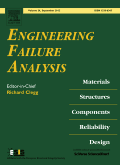
Engineering Failure Analysis
Pioneering Insights for Safer Engineering PracticesEngineering Failure Analysis is a prestigious peer-reviewed journal published by PERGAMON-ELSEVIER SCIENCE LTD, dedicated to advancing the field of engineering through comprehensive investigations into the causes and consequences of failures in various engineering domains. Established in 1994, the journal has become a cornerstone of knowledge in sectors such as Aerospace, Automotive, and Materials Science, earning its place within the Q1 quartile across multiple relevant categories in 2023. With a broad scope that encompasses topics related to safety, risk, reliability, and quality, it serves as a vital resource for researchers, professionals, and students keen on understanding how to mitigate failures and improve engineering practices. Although this journal does not currently offer Open Access, its impact is underscored by its high Scopus ranking, where it sits comfortably in the 36th position out of 307 in General Engineering. By bridging theoretical insights and practical applications, Engineering Failure Analysis plays a pivotal role in shaping the future of engineering standards and safety practices.
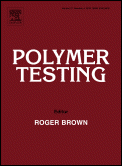
POLYMER TESTING
Pioneering Research in Polymer Behavior and TestingPOLYMER TESTING is an esteemed academic journal published by Elsevier Science Ltd, focusing on advancements in the field of polymers and their applications. With a high impact factor and category quartiles reflecting its influence, it ranks in the Q1 quartile in both Organic Chemistry and Polymers and Plastics, indicating its crucial role in shaping research in these disciplines. The journal has been open access since 2021, ensuring that cutting-edge research is readily available to researchers, practitioners, and students alike. Covering the convergence of foundational and innovative studies from 1980 and continuing through 2024, POLYMER TESTING appeals to a diverse audience, from materials scientists to chemical engineers, providing a platform for high-quality peer-reviewed articles that advance our understanding of polymer behavior, performance, and applications. If you are looking to stay abreast of the latest trends and breakthroughs in polymer science, POLYMER TESTING is your go-to resource.
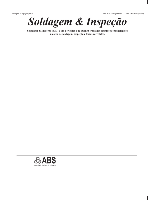
Soldagem & Inspecao
Advancing the Frontiers of Welding ScienceSoldagem & Inspecao, published by the ASSOC BRASIL SOLDAGEM, is a prominent open-access journal dedicated to the fields of Mechanical Engineering, Mechanics of Materials, and Metals and Alloys. Since 2009, this journal has provided a platform for researchers and professionals to share their findings in welding and inspection technology, contributing to significant advancements in material science. With its ISSN 0104-9224 and E-ISSN 1980-6973, "Soldagem & Inspecao" is indexed in Scopus and ranks in the fourth quartile for 2023 across several engineering categories. Despite its nascent metrics, the journal serves as an essential resource for students, professionals, and academics alike, enabling readers to stay updated with the latest research developments. The journal is based in São Paulo, Brazil, and actively encourages contributions that foster innovation and scientific inquiry in the welding community. By disseminating research that emphasizes practical applications and theoretical insights, "Soldagem & Inspecao" plays a vital role in bridging the gap between academic research and industry practices.

Structural Monitoring and Maintenance, An International Journal
Driving the evolution of maintenance strategies worldwide.Structural Monitoring and Maintenance, An International Journal is a prestigious publication dedicated to advancing knowledge in the fields of civil and structural engineering, as well as safety, risk, reliability, and quality assessment. Published by TECHNO-PRESS in South Korea, this journal serves as a vital platform for researchers, professionals, and students interested in the latest methodologies, technologies, and case studies pertaining to structural monitoring, assessment, and maintenance practices. With its current Q3 category ranking in both structural engineering and safety metrics, the journal aims to promote high-quality research that addresses real-world challenges in structural integrity and safety. As the journal converges its scope from 2014 to 2024, it continues to welcome innovative studies that contribute to the development of sustainable and resilient infrastructures worldwide. Despite the absence of an open-access option, the substantial readership is ensured through its indexed positions, currently ranked among the top journals in its field according to Scopus metrics. Engage with groundbreaking research that shapes the future of structural engineering and safety practices by delving into the contributions this journal offers.
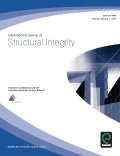
International Journal of Structural Integrity
Championing High-Impact Research in Engineering DisciplinesInternational Journal of Structural Integrity is a premier peer-reviewed academic journal published by EMERALD GROUP PUBLISHING LTD in the United Kingdom. As a valuable resource in the fields of Civil and Structural Engineering, Mechanical Engineering, and Mechanics of Materials, this journal serves to advance knowledge and foster innovation in these critical areas of study. With an impressive impact factor reflected in its 2023 category quartiles, ranking Q2 across multiple engineering disciplines, the journal is recognized for its contributions to research and practical application. Researchers can benefit from its rigorous publishing standards that encompass a wide array of interdisciplinary topics pertaining to structural integrity. Accessing the journal is facilitated for those seeking high-quality research and findings, vital to both academia and industry. Since its inception in 2010 and extending until 2024, the journal continues to attract scholarly articles that push the boundaries of engineering knowledge, making it an essential platform for professionals, students, and researchers seeking to stay at the forefront of structural engineering."
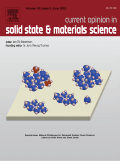
CURRENT OPINION IN SOLID STATE & MATERIALS SCIENCE
Connecting researchers for a sustainable materials future.CURRENT OPINION IN SOLID STATE & MATERIALS SCIENCE, published by Pergamon-Elsevier Science Ltd, is a premier journal in the field of materials science that offers critical insights into the latest advancements and trends in solid-state materials. With an impressive impact factor and a 2023 ranking in the top quartile (Q1) for materials science, this journal provides a platform for researchers, professionals, and students to explore and disseminate high-quality research findings. The journal covers a broad range of topics, encouraging interdisciplinary dialogue among scientists and engineers. While currently not available as open access, its rigorous selection process ensures that only the most impactful and relevant studies are published. Since its inception, CURRENT OPINION IN SOLID STATE & MATERIALS SCIENCE has established itself as an essential resource for anyone involved in the field, facilitating the rapid exchange of knowledge that is vital for advancing material innovations.
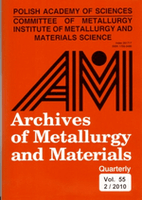
ARCHIVES OF METALLURGY AND MATERIALS
Championing Open Access to Materials Science InsightsArchives of Metallurgy and Materials is a prestigious open-access journal published by the Polish Academy of Sciences, Institute of Metallurgy and Materials Science. With its ISSN 1733-3490 and E-ISSN 2300-1909, this journal has been a critical resource for researchers and professionals in the field of materials science since its establishment in 2004. The journal focuses primarily on advancements in metals and alloys, contributing to the growing body of knowledge in this dynamic and evolving discipline. As acknowledged in the 2023 Scopus rankings, it currently holds a Q3 category in both Metals and Alloys with a rank of #117 out of 176 journals, indicating its commitment to quality research despite being relatively young in the indexing landscape. With its open-access policy initiated in 2010, the journal aims to enhance the dissemination of scientific findings and encourage collaboration among the global materials science community. Researchers, students, and industry professionals are invited to explore the valuable insights and innovations showcased within Archives of Metallurgy and Materials, contributing to the advancement of material technologies and applications.

JOURNAL OF ELECTRONIC TESTING-THEORY AND APPLICATIONS
Fostering collaboration in the electronic testing community.JOURNAL OF ELECTRONIC TESTING-THEORY AND APPLICATIONS is a leading academic journal published by SPRINGER, dedicated to advancing the field of electronic testing through innovative research and applications. With an ISSN of 0923-8174 and an E-ISSN of 1573-0727, this journal plays a vital role in disseminating significant findings and methodologies that enhance the reliability and performance of electronic systems. Based in the Netherlands, with a prominent address at ONE NEW YORK PLAZA, SUITE 4600, NEW YORK, NY 10004, UNITED STATES, the journal covers a broad spectrum of topics related to electronic testing, making it essential reading for researchers, professionals, and students in the Electrical and Electronic Engineering domain. In the 2023 ranking, it holds a Category Quartile of Q3 and is ranked #495 out of 797 journals in Scopus, reflecting its contributions to the discipline. Although it does not provide open access options, readers and contributors can engage with high-caliber research from 1990 through to 2024, further emphasizing its commitment to the ongoing evolution of electronic testing methodologies.
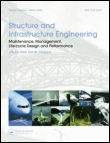
Structure and Infrastructure Engineering
Unveiling Insights for Tomorrow's InfrastructureStructure and Infrastructure Engineering, published by TAYLOR & FRANCIS LTD, is a premier academic journal that serves as a vital resource in the fields of engineering and construction. Featuring an ISSN of 1573-2479 and an E-ISSN of 1744-8980, this journal has established its reputation as a leader in disseminating high-quality research. Since its inception, it has successfully transitioned through converged years from 2007 to 2024, earning a prestigious position within the Q1 quartile across multiple engineering disciplines, including Building and Construction, Civil and Structural Engineering, and Ocean Engineering, among others. Its impact is underscored by impressive Scopus rankings, particularly its 5th rank in Ocean Engineering within the top 95th percentile. The journal’s commitment to advancing knowledge in safety, risk, reliability, and quality makes it an indispensable platform for researchers, professionals, and students aiming to stay at the forefront of engineering innovations. Access to its comprehensive articles allows for a deeper understanding of contemporary challenges and solutions in infrastructure development.
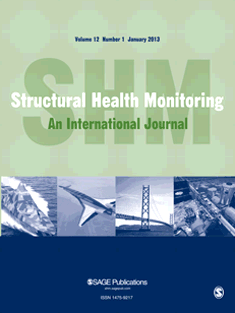
STRUCTURAL HEALTH MONITORING-AN INTERNATIONAL JOURNAL
Empowering Research for a Resilient TomorrowSTRUCTURAL HEALTH MONITORING-AN INTERNATIONAL JOURNAL, published by SAGE PUBLICATIONS LTD, stands at the forefront of interdisciplinary research in the fields of Biophysics and Mechanical Engineering, with an impressive 2023 ranking of Q1 in both categories. Since its inception in 2002, this journal has provided a critical platform for scholars and practitioners to disseminate innovative methodologies and findings concerning the assessment, monitoring, and management of structural integrity across various applications. With a robust Scopus ranking of #28 out of 672 in Mechanical Engineering and #8 out of 152 in Biophysics, the journal underscores its commitment to excellence and relevancy in advancing the science of structural health monitoring. Dedicated to fostering collaboration and knowledge sharing, the journal welcomes contributions that push the boundaries of conventional systems, enhancing safety, efficiency, and sustainability in engineering practices. Researchers, professionals, and students are encouraged to explore the wealth of knowledge this journal offers, as it continues to shape the future of structural health monitoring up to 2024 and beyond.